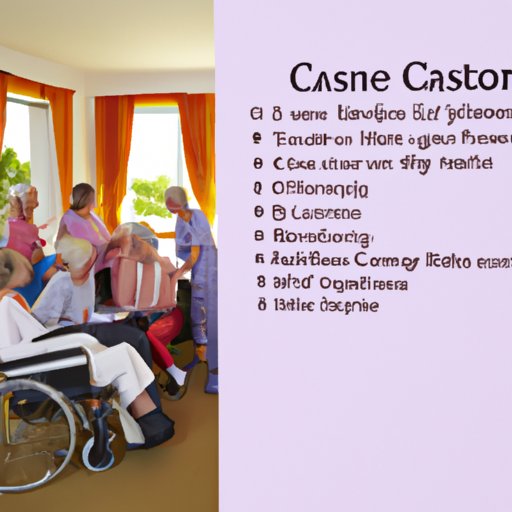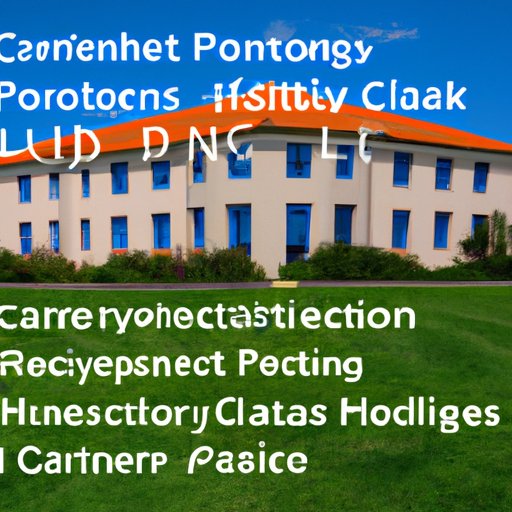Introduction
Care homes provide a vital service for elderly and disabled individuals, offering them essential support and assistance with their daily lives. As such, many people are interested in investing in care homes and running these businesses. But are care homes profitable? In this article, we will explore the financial benefits of investing in care home businesses and analyze the economic viability of these ventures.
Analyzing the Profitability of Care Homes: A Financial Perspective
In order to determine whether care homes are profitable, it is necessary to analyze the business from a financial perspective. This involves assessing the cost structure of care homes and examining potential revenue streams, as well as calculating the return on investment (ROI).
Assessing the Cost Structure of Care Homes
The cost structure of care homes is complex and can vary significantly depending on the size and type of facility. Generally speaking, care homes require large capital investments to purchase or rent premises, acquire equipment, and hire staff. Other costs associated with running a care home include utilities, insurance, marketing, and ongoing maintenance and repairs. Additionally, care homes must adhere to strict safety and health regulations, which means additional costs may be incurred to meet these requirements.
Examining Potential Revenue Streams
Care homes generate revenue primarily through fees charged to residents. These fees can range from basic charges for accommodation and meals to additional charges for activities and services. Care homes may also receive government subsidies and grants, or enter into contracts with private insurers. Other potential revenue streams include donations and fundraising activities.
Calculating the Return on Investment (ROI)
The final step in determining the profitability of care homes is to calculate the return on investment (ROI). This involves subtracting the total costs of running the business from the total revenue generated, and then dividing the result by the initial capital investment. The higher the ROI, the more profitable the business is likely to be.

The Benefits and Challenges of Investing in Care Home Businesses
Investing in care homes can have numerous benefits, including providing a steady income and the satisfaction of helping vulnerable individuals. However, there are also some potential risks involved. For example, the cost of running a care home can be high, and unexpected expenses can quickly eat away at profits. Additionally, care homes can be subject to changes in government regulations, which may affect profitability.
Exploring the Economics of Running a Care Home
In addition to analyzing the financial aspects of care homes, it is also important to consider the economics of running a care home. This includes determining the level of demand for care home services, analyzing the local market, and understanding operating costs.
Determining the Level of Demand
The level of demand for care home services can have a significant impact on profitability. Care homes should conduct market research to identify potential customers and assess how much they are willing to pay for services. This can help care home owners determine the fees they need to charge in order to remain profitable.
Analyzing the Local Market
Another important factor is the local market. Care homes should analyze the competition in their area, as well as any potential opportunities for growth. Care home owners should also consider the demographics of the area, as this can affect the types of services they offer and the pricing structure.
Understanding Operating Costs
Finally, it is important to understand operating costs. Care homes should carefully monitor their expenses to ensure they remain within budget. This includes tracking wages, supplies, and other expenses, as well as making sure that all necessary regulatory standards are met.

Understanding the Impact of Government Regulations on Care Home Profitability
Government regulations can have a major influence on care home profitability. Care home owners should familiarize themselves with relevant laws and regulations, such as those related to minimum wage, health and safety, and licensing. Additionally, they should understand the tax implications of running a care home business.

Examining the Fiscal Benefits of Operating a Care Home
Despite the challenges, there are several fiscal benefits of operating a care home. For example, care homes can access various sources of funding, such as government grants and loans. Additionally, care home owners can maximize efficiency and minimize costs by streamlining processes and leveraging technology.
Conclusion
This article has explored the financial aspects of care homes and examined whether they are profitable investments. We have looked at the cost structure, potential revenue streams, and ROI of care homes, as well as the impact of government regulations and sources of funding. Overall, while there are challenges associated with running a care home business, there are also numerous fiscal benefits that make it a viable investment opportunity.
(Note: Is this article not meeting your expectations? Do you have knowledge or insights to share? Unlock new opportunities and expand your reach by joining our authors team. Click Registration to join us and share your expertise with our readers.)
